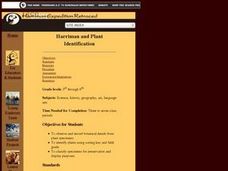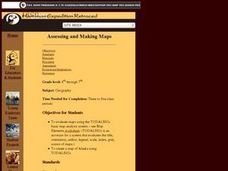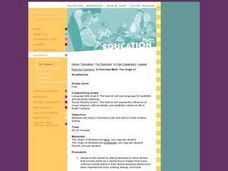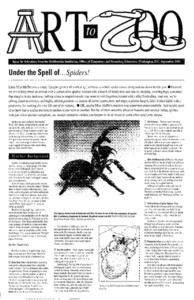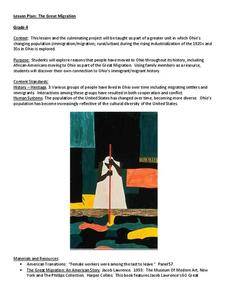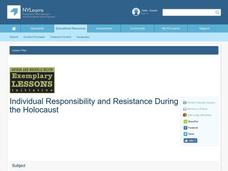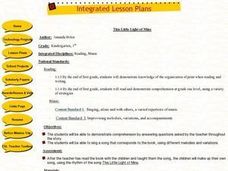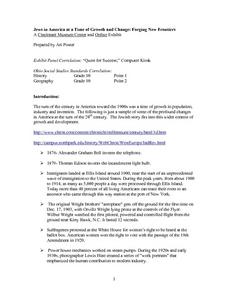Curated OER
What Do We Learn From the Repartiation of Alaska Native Artifacts?
Students observe and evaluate evidence of Alaska Native cultural symbols and artifacts. They research historical data from a variety of primary resources, including the Harriman expedition journals, related web sites, oral accounts,...
Curated OER
A Neighborhood Expedition
Students plan and conduct an expedition through their neighborhood based on the techniques used by the Harriman Expedition to Alaska in 1899. They research the Harriman expedition on the internet and then create a route and collection...
Curated OER
Harriman and Plant Identification
Students observe and record botanical details from the plant specimens. They identify plants using sorting key and field guide and classify specimens for preservation and display purposes.
Curated OER
Can We Be Both Conservationists and Consumers?
High schoolers explore their role as consumers and conservationists and what roles they play in today's economic climate. They explore resource allocation issues. Students analyze data and draw comparisons between historical and...
Curated OER
How Has Transportation Changed Since the 1899 Harriman Alaska Expedition?
Students recognize modes of transportation. They research historical data from a variety of primary and secondary sources including the Harriman expedition journals, related web sites, and photographs from the expedition. Students...
Curated OER
Texas Treasures
Students explore the meanings of the word "treasure," and examine the use of clay in the construction of buildings in San Antonio, Texas. They examine clay artifacts, and watch a video about pottery artist, Harding Black. Students then...
Curated OER
Learning About Location: Charting the Path of the George W. Elder
Students acquire a working knowledge of the geographical concepts: absolute location, relative location, longitude and latitude. They analyze primary sources that shows the physical and human characteristics of the places along the 1899...
Curated OER
Assessing and Making Maps
Students evaluate maps using the TODALSIGs basic map analysis system, explained on the worksheet. They create a map of Alaska using TODALSIGs. Students brainstorm the elements of maps.
Curated OER
Cherokeee Myth: Origin of Strawberries
Fourth graders read a Cherokee myth about the origin of strawberries. After reading the story, they add another chapter to it and read their additions to the class. Or, as a group activity, they each write a few sentences and then pass...
Curated OER
Under the Spell of Spiders!
Young scholars read about spider body parts, abilities, tendencies, and life cycles. In this Under the Spell of Spiders! lesson, students create mystery creatures that turn out to be spiders. Young scholars catch and observe spiders and...
Curated OER
The Great Migration
What a terrific instructional activity! Have your class learn about immigration using this resource. Fourth graders discuss the Great Migration in Ohio through art, writing, and discussion. Afterward, they create a presentation in which...
Curated OER
Individual Responsibility and Resistance During the Holocaust
Students examine what obstacles hinder resistance, what types of resistance are possible and how different individuals resisted Nazi oppression. They examine primary source documents related to the Holocaust and analyze various sources...
John F. Kennedy Presidential Library & Museum
Analyzing the Inaugural Address
Get high school historians to step outside their own shoes by responding to JFK's inaugural address from the perspective of a civil rights activist, a soviet diplomat, or a Cuban exile. After a class discussion about the address, the...
Curated OER
Northwest Coast Indians: Winter Celebrations Potlatch
Upper elementary learners engage in a study about the Potlatch as a Northwest Coast Indians social custom. Groups of pupils plan their own Potlatch ceremony; incorporating activities and creating gifts much like the ones that the Indians...
Curated OER
This Little Light of Mine
Elementary schoolers discover how electricity travels and create an electron flow through a closed circuit. They work together to make a closed circuit and observe the electricity being made. This outstanding lesson plan is well worth...
Curated OER
Money Math Lessons for Life
An outstanding instructional activity on financial literacy is here for you. Learners are presented with six scenarios, then compute the amount of savings they will have in their accounts. They complete a series of exercises designed to...
Curated OER
Ka'ianaa'ahu'ulu: A Leader of Hawai'i
Students evaluate leadership traits in 18th century Hawai'i and modern times. In this leadership skills lesson, students identify leadership traits and read the story of Ka’iana. Students monitor the leadership activities of a partner...
Curated OER
Jews and Blues
Students examine how American Jews affect music and entertainment. They identify problems between immigrants and their children. They relate the Jewish American issue to those of African Americans.
Curated OER
Lesson: Urban China: Contemporary China
The urbanization and consumerism of modern China is the hot topic up for critical analysis. Kids view a series of photographs that specifically describe Chinese modernization, urbanization, consumerism, and waste. They discuss each...
Curated OER
Lesson: Younger Than Jesus: Understanding, Looking at, Making Abstract Art
Before the class makes abstract art, they see contemporary examples and analyze them. They look at art made by abstract artists under the age of 33 then use similar techniques to create an interesting collection of their own. The lesson...
John F. Kennedy Presidential Library & Museum
Analyzing the Rhetoric of JFK’s Inaugural Address
“And so, my fellow Americans: ask not what your country can do for you—ask what you can do for your. country.” Did you know that John Kenneth Galbraith, Adlai Stevenson, and Theodore Sorensen helped John F. Kennedy craft his 1961...
Field Museum
The Case of Darwin's Finches
One of the most striking pieces of evidence for Darwin's Evolution of Species was his observations of finches and how their beaks differed from island to island, depending on their primary food sources. So what would happen to the theory...
Curated OER
Northwest Coast Indians: Spring and Summer Salmon
Here is a fabulous lesson about the cultures of the Northwest Indians. Through an exploration of a story about the Salmon People, learners study the practice of harvesting salmon and the cultural importance of salmon to the Northwest...
Curated OER
Jews in America at the Time of Growth and Change: Forging New Frontiers
Tenth graders examine the role of Jewish Americans in the 1900s. They examing the changes in industry and inventions. They also identify how Jewish Americans changed society and religious organization.
Other popular searches
- History of Science Museums
- History Museums
- +History +Museums
- Natural History Museums
- Local History Museums
- "History of Science Museums
- Visiting Museums History




